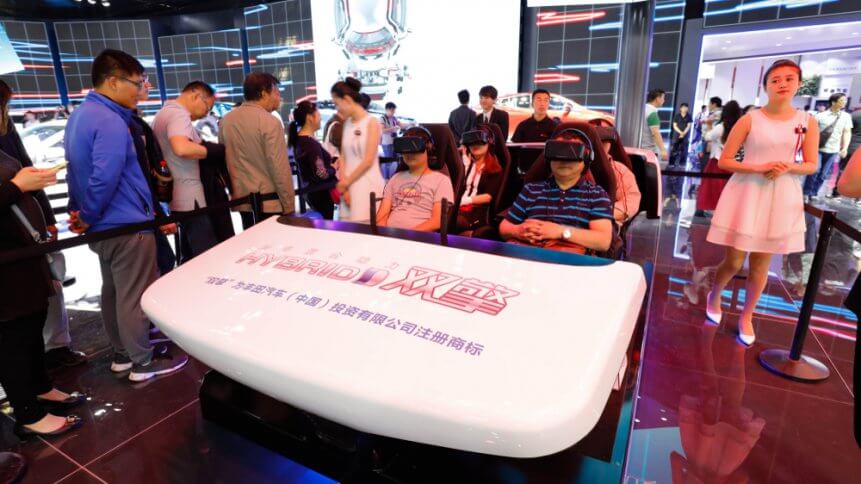China set to soar ahead with XR tech by 2030

Immersive XR (mixed reality) technology— comprising augmented reality (AR) and virtual reality (VR)— will be as ubiquitous as mobile devices by 2025 according to a survey by global law firm Perkins Coie LLP and the XR Association.
From creating exciting new retail experiences to facilitating new ways of immersive training, applications are immense; XR has even been tipped to transform how we visualize data on Wall Street.
North America has been one of the keenest investors in the technology so far comprising nearly two-thirds of global investment (62 percent) and is expected to grow the fastest in the next five years. VR software accounts for two-thirds of the total VR market revenue, while the remainder comes from hardware sales.
While concerns remain over usability— hardware is far from the “contact lens” ideal— if US business needed any affirmation for its commitment, it’s that archrival-in-technology China (and Asia-Pacific as a whole) is now doubling down on its investment in the tech as well.
Research by GlobalData found that APAC enterprises are set to drive the global VR market through 2030, which is set to grow at a compound annual growth rate (CAGR) of 13 percent from an estimated US$7 billion in 2018 to US$28 billion in 2030.
Currently, VR software accounts for two-thirds of the total VR market revenue globally, with the remainder coming from hardware sales. Games account for the lion’s share of software revenue (68 percent in 2018), with enterprise software contributing a further 30 percent and non-gaming consumer software about 2 percent.
Despite these technologies being in the nascent stages of evolution and adoption in APAC, a significant rise in their uptake is expected, especially around the market growth for non-gaming and enterprise software for VR.
“VR adoption has so far been relatively low in APAC compared to developed markets like the US. However, the region is bound to witness a strong adoption trend in the future, aided by high-speed 5G network deployment,” said Sunil Kumar Verma, Lead ICT Analyst at GlobalData.
The future potential of XR technology in the region is also underlined by China’s vocal commitment to 6G research— the next but very distant iteration of cellular technology.
Combined with advanced XR technologies, the potential remains unclear, but we can imagine, for instance, live sports games with your personalized choice of real-time stats, or the ability for a housebuyer to walk round their dream home, while an architect makes live modifications.
YOU MIGHT LIKE

The disruptive 5G future of DOOH advertising
Developments of VR in Asia
Besides the deployment of high-speed networks across the region, varied government initiatives further fuel the aggressive trend of adopting VR; “The burgeoning ecosystem of connected devices, which is estimated to grow further, and ample government support, will drive the VR adoption in the region,” said Kumar Verma.
In China, the Shenzhen Municipal Government-linked arms with HTC to establish a Shenzhen VR Investment fund worth US$1.45 billion. At the same time, a new China VR Research Institute is built to instigate the VR ecosystem in China.
In 2016, the South Korean government planned to dive into the AR/VR marketplace with an investment of US$363 million over the next five years.
The government launched AR/VR hubs such as Korean Virtual Reality – Augmented Reality Complex (KoVAC) at Seoul in 2017, followed by six more similar hubs and plans for more to emerge by 2020.
In Japan, the Ministry of Economy, Trade, and Industry (METI) offered grants to content creators using new-age technology such as VR for marketing purposes.
Countries, including Australia, India, and Malaysia, are embracing the VR wave whereby local governments have collaborated with AR/VR companies to promote educational and tourism campaigns.
Support from government bodies does leverage the playing field of VR/AR, but it is also the deployment of network infrastructure such as 5G and 6G (still in the cradle of labs) that will boost the VR/AR ecosystem at a global scale.









